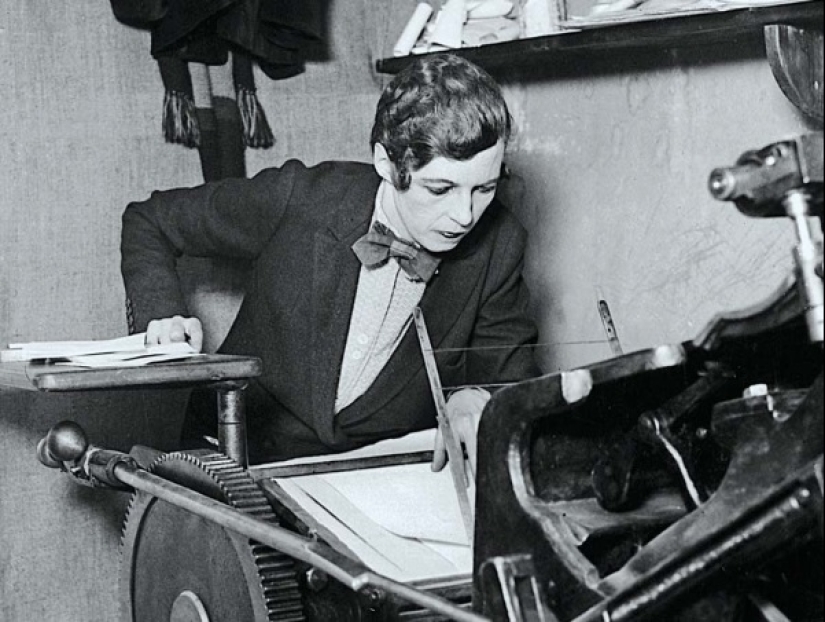Nancy Cunard - artistic muse and style icon of the early 20th century
Each era sets its own standards for female happiness. At the beginning of the last century, the ideal option for a young aristocrat was considered to be a successful debut in high society, a successful marriage and the measured life of a rich slacker. But this option did not suit everyone. Nancy Cunard, the daughter of a wealthy American heiress and a British baronet, was not interested in family life. She preferred a bright and eventful life in front of everyone. Nancy became a muse for artists and writers, an activist, and a style icon of the 1920s.

Nancy Cunard was born on March 10, 1896 in London. Her parents were British baronet Bache Cunard and American socialite Maud Alice Burke. From an early age, the girl witnessed the bohemian life of her parents. Therefore, it is not surprising that in her youth she was drawn to aristocratic circles.
Having reached adulthood, Nancy left her parents' home and moved from London to Paris. There she quickly became a part of the community of poets, artists and writers. But the young aristocrat was not interested in the dull classics - she was attracted like a magnet by the surrealists, dadaists and modernists who had become fashionable.

Nancy Cunard didn't need money, but she didn't spend it on dresses and parties. She wanted to do something truly interesting and useful. This is how the organization The Hours Press was born, the purpose of which was to support poets who worked in experimental styles. They, like no one else, needed help, because publications often refused to publish their works. Publishing fashionable poets has always been associated with the risk of losses.
But this was too little for Nancy’s active nature. She also became an activist fighting racism in the arts. With her money, she supported black writers and even published their books at her own expense. With the outbreak of World War II, Cunard joined the anti-fascist movement. The woman wrote devastating articles exposing the regime of Mussolini in Italy and Franco in Spain. She also worked as a translator for the French Resistance.
Particularly noteworthy is the personal style of this woman. We can say that she was ahead of the fashion of her time, boldly experimenting with wardrobe, accessories and jewelry. Nancy Cunard wore ethnic jewelry, turbans, leather jackets and printed dresses in the 20s. In the world, all this came into fashion only in the early 70s!
Nancy especially loved African bracelets made of wood, brass, copper and ivory. Sometimes dozens of jewelry adorned her arms. At first, French society did not accept the shocking style of the British woman. But then many began to copy her, and the woman quickly became a trendsetter. It got to the point that famous jewelry houses such as Boucheron began producing collections of bracelets in the Cunard style. What can we say about her contemporaries - the image of Nancy Cunard still inspires jewelers and couturiers.
Her signature short haircut, piercing gaze, almost painful thinness and mesmerizing plasticity made men and women tremble. Writer Aldous Huxley was delighted with Nancy Cunard's gait. He gave it to the heroine of his novel “The Jester’s Round Dance.” Literary critic Raymond Mortimer described the woman's walking style as follows:
This woman’s personal life was no less fast-paced. In 1916, she married a war veteran, but the marriage broke up after a year and a half. In 1921, Cunard began an affair with the American poet and translator Ezra Pound, which lasted 5 years. She then seduced the poet Elliot, with whom her relationship inspired her to write three collections of poetry.
In 1928, Nancy fell in love with Henry Crowder, an African-American jazz pianist. It was this man who told her about racism in the United States, awakening a new spark in Cunard’s soul. With new love, the woman moved in 1932 to live overseas and settled in black Harlem.
Society condemned the aristocrat for her relationship with a “black”. Nancy’s mother, who by that time was already a widow, did not stand aside either. She launched an entire campaign to separate her daughter from Crowder. Maude Alice Burke insisted on a personal meeting in order to “set her mind right” with the rebel. But Nancy refused to meet despite the threat of being left without an impressive inheritance. Seeing her daughter's determination, her mother left her alone.
But such a busy life was not in vain for Cunard. Being carried away by something, she often brought herself to nervous and physical exhaustion. Nancy consumed liters of alcohol and did not shy away from cocaine, which affected her psyche. The woman fought with the police several times and was eventually forced into a psychiatric clinic.
After leaving the hospital, Nancy Cunard discovered that her capital had disappeared like smoke, and many of her friends did not want to communicate with her. She plunged into the abyss of alcoholism, in which she remained for five long years. In March 1965, a 69-year-old aristocrat arrived for another drinking party in Paris. She did not appear in society for a long time, and everyone noted her incredible thinness.
It is not known exactly what happened at this party. But soon Nancy Cunard was found unconscious on the sidewalk by police. She was taken to the hospital, where she was revived. But the woman’s consciousness died - she did not remember her name and did not realize where she was. Her body was incredibly exhausted - Nancy weighed only 27 kg. Two days later she fell into a coma and died quietly in her hospital room.
A few hours before her death, Nancy showed faint glimpses of consciousness. She asked to bring her paper and pencil. The dying woman began writing letters to friends, living and deceased, and also composed several crazy poems. Cunard's acquaintances received all this correspondence after her departure.
